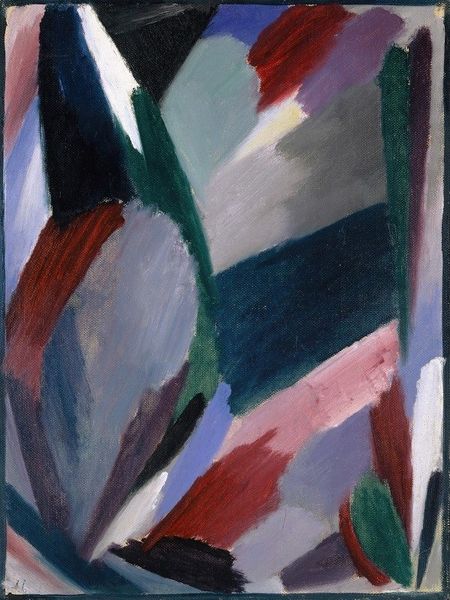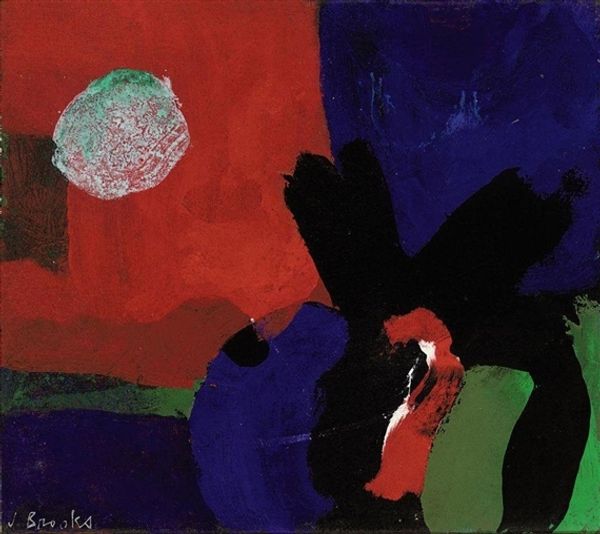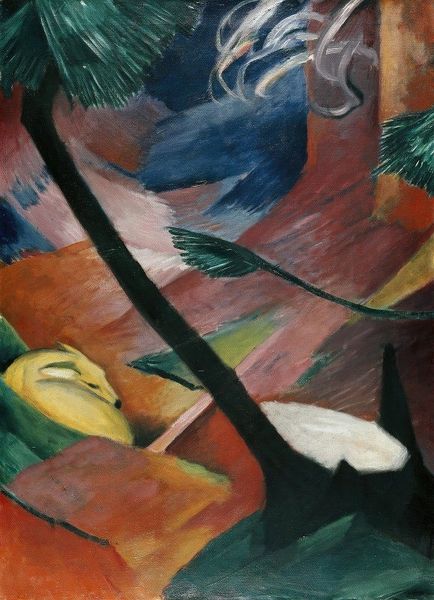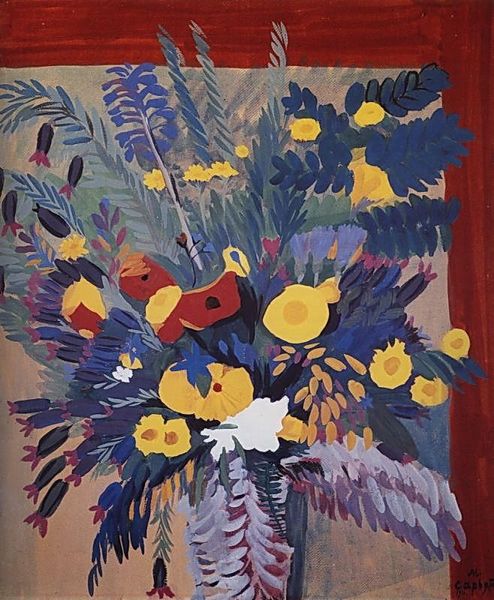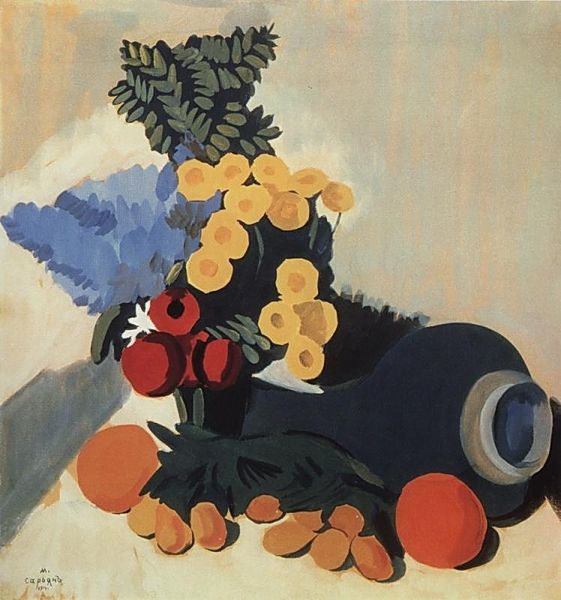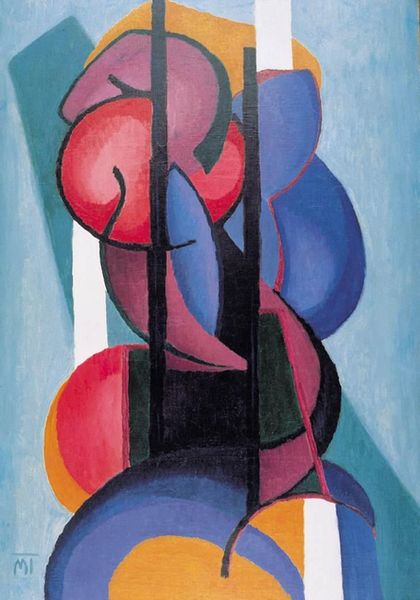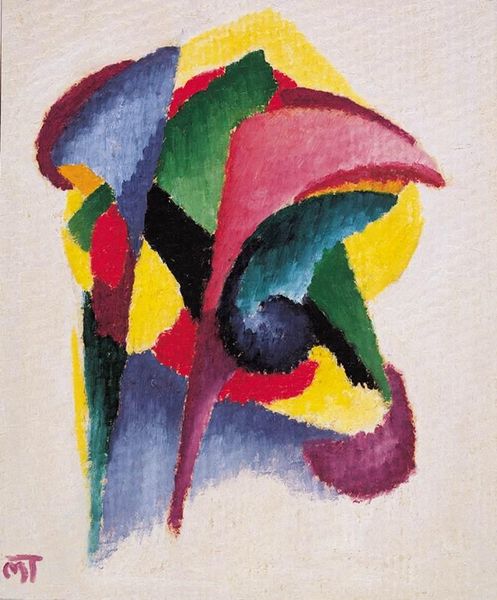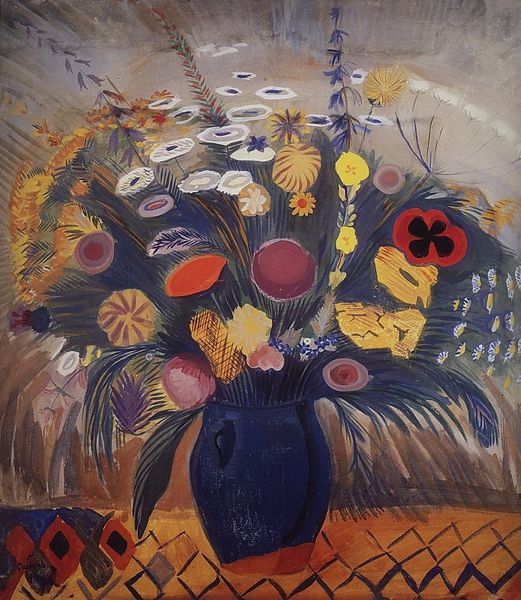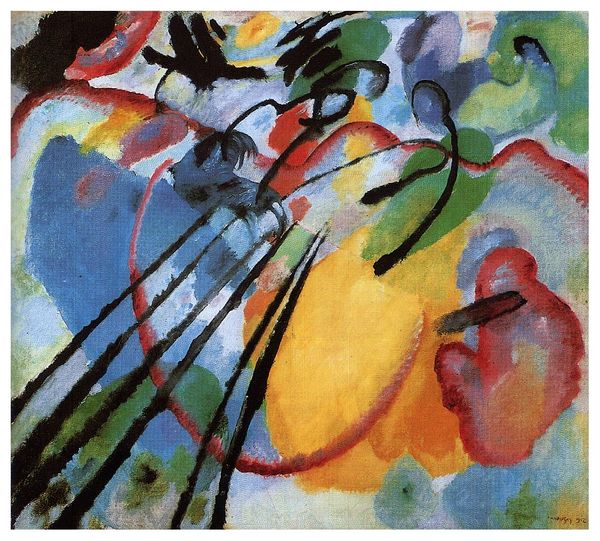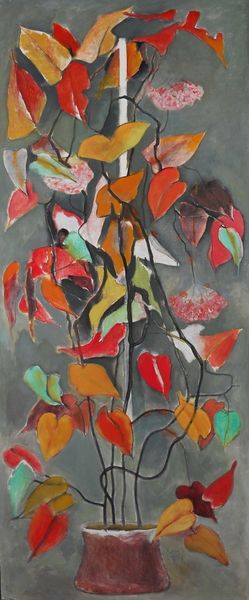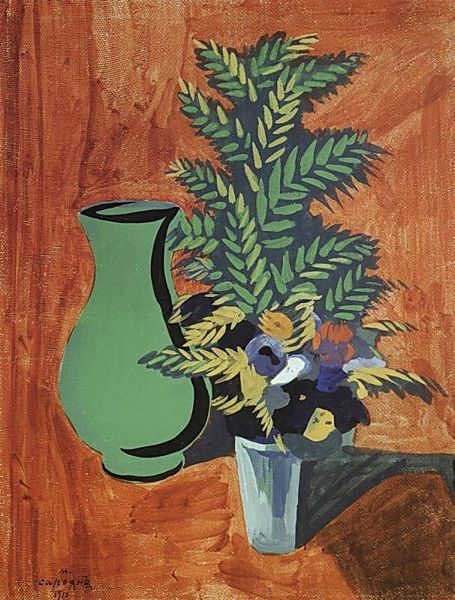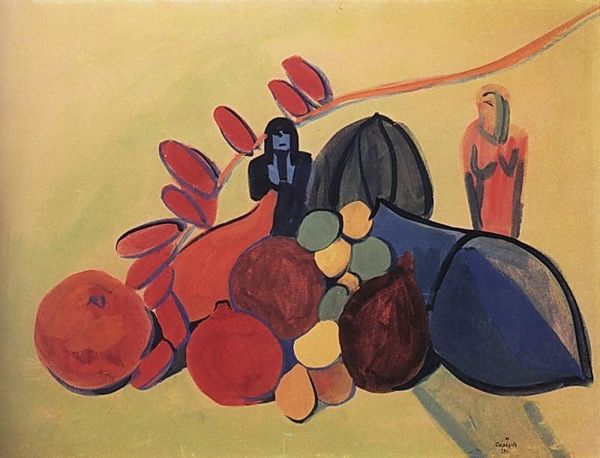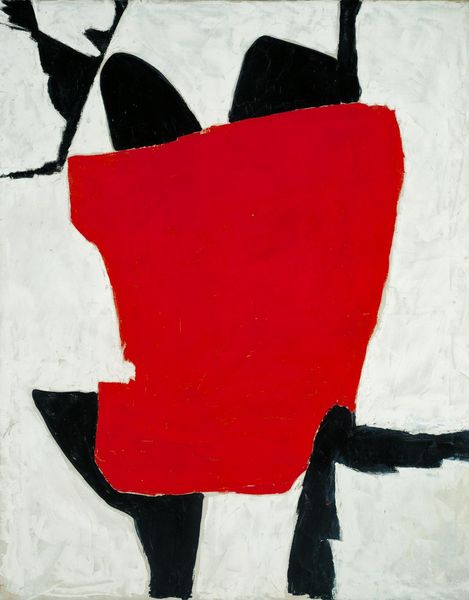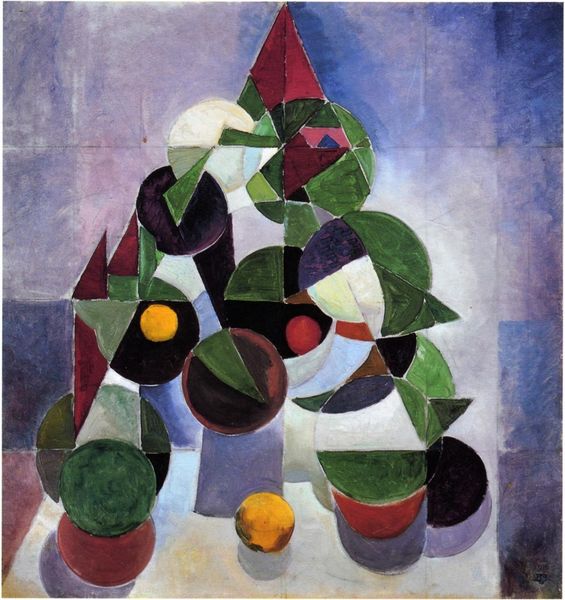
Dimensions: 39 x 33.5 cm
Copyright: Public domain US
Curator: Let’s discuss Martiros Sarian’s “Red Flowers,” an oil painting executed in 1910. What strikes you most upon a first glance? Editor: Immediately, I'm taken by the intensity of the limited palette. The almost crude juxtaposition of vibrant reds against those brooding blues feels charged. It’s as though Sarian aimed for raw emotional impact, rather than botanical accuracy. Curator: Indeed. Observe how the composition is structured by the contrasting colours. The geometry, too, with the background frame and abstracted floral shapes, directs our sightline deliberately. Do you find this evokes a certain emotion within you? Editor: It does. To me, these bold choices—the simplification of form, the stark colour contrasts—reflect the rising sense of social unease just before World War I. The painting, to my mind, speaks to a burgeoning tension, a moment of explosive change barely contained. Consider Sarian's background as an Armenian artist navigating early 20th century Imperial Russia—it seems a daring challenge to academic conventions of flower painting. Curator: I agree to an extent, but wonder if that confines its appeal to mere political critique. Surely we must consider his adept control over line and colour. These stylistic devices convey the emotion in its purest form, don't you think? Look at how Sarian defines the flowers not through detail but through simple circular forms outlined by deep black strokes. Editor: Absolutely, it's not *only* a political piece. But it is clear to me the painting is actively challenging traditional expectations of beauty and harmony; these reds and blues appear as an attempt to portray something deeper, less saccharine. It reminds me of some early feminist art—the breaking away from aesthetic and social constraints to depict life as felt rather than how it "should" look. Curator: I can see the link to the avant-garde, but the beauty of "Red Flowers" lies precisely in how it marries abstraction with tangible emotion, rendered so well through a close formal interplay between those few compositional elements. Editor: Well said. Perhaps its beauty resides in its ambivalence then, residing in both artistic strategy and also speaking for the world outside of its frame.
Comments
No comments
Be the first to comment and join the conversation on the ultimate creative platform.
